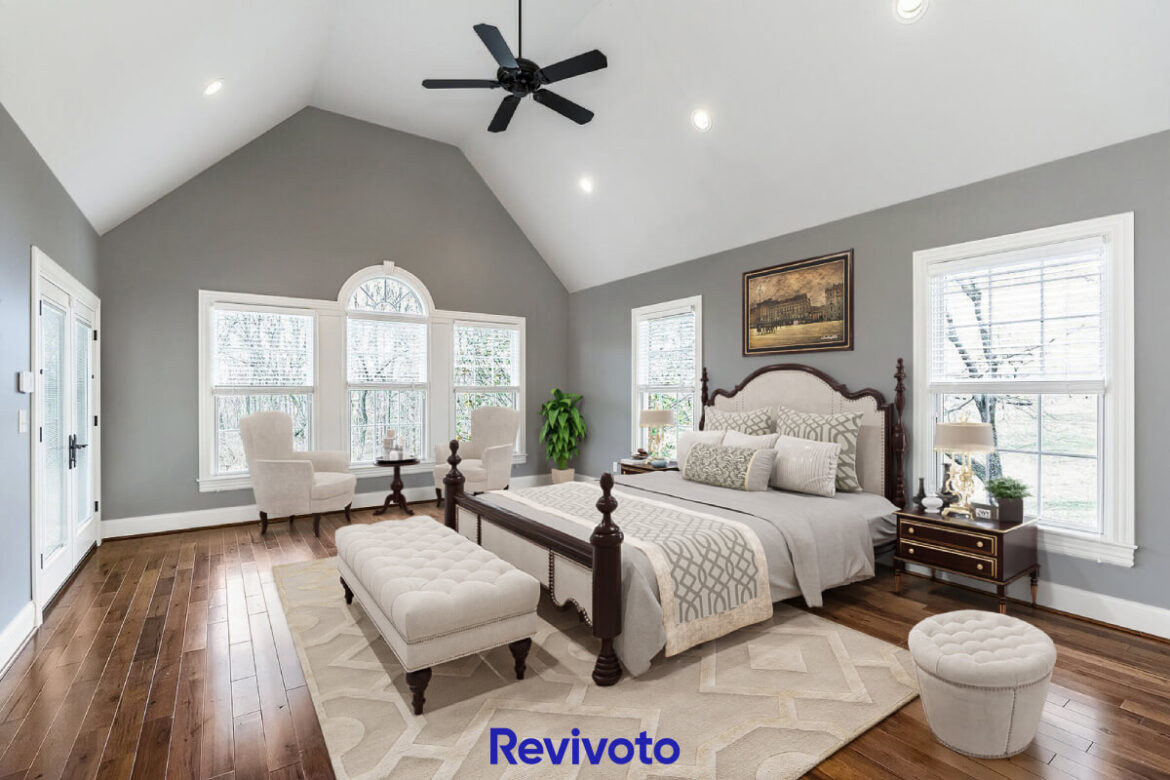Traditional style in interior design emphasizes ornate furniture, rich textures, and a warm color palette that evokes a sense of comfort and sophistication. This timeless style is influenced by various historical eras, including the classic elegance of Victorian, the graceful simplicity of Colonial, and the rustic charm of French Country.
The traditional design emphasizes:
- Complex details
- Symmetrical arrangements
- Harmonic balance
- Showcasing plush fabrics
- Polished wood
- Subtle patterns and motifs.
Traditional style in virtual staging can create a captivating visual experience by integrating classic design elements into digital environments. Virtual staging with this style provides unlimited options for viewers, so you can use this technology to improve the look of your property.
This blog will examine traditional style aspects and the reasons for their appeal to help you build a spectacular virtual staging design that distinguishes your house.
Table of Contents
Origin of Traditional Style
The ancient designs of Greece and Rome influenced traditional style since they developed the concepts of symmetry, proportion, and classical decoration. Also, the elements, including columns, arches, and complex carving, established the basis for the beauty and elegance of this style.
Moving forward in history, the Renaissance period in Europe, particularly in Italy, increased interest in the classical style. This rebirth of artistic and intellectual pursuits emphasized ornate furnishings, rich textiles, and elaborate architectural detailing, all of which contributed to the creation of traditional style.
The Baroque and Rococo movements developed in the 17th and 18th centuries, bringing luxury and magnificence to traditional design. Baroque interiors were characterized by dramatic effects, intricate carvings, and richly decorated surfaces. At the same time, Rococo brought a lighter and more playful touch with its emphasis on asymmetry, delicate motifs, and pastel color palettes.
In the 19th century, the Victorian era took center stage, epitomizing the core of traditional style. Victorian interiors featured lavish furnishings, intricate wallpaper patterns, and an eclectic blend of historical influences, resulting in spaces that reflected luxury and elegance.
The traditional design continued to evolve throughout the 20th century, integrating elements from various eras and cultures. From the timeless elegance of colonial design to the rustic charm of French country and the understated complexity of traditional English design, it has embraced diverse aesthetics while staying true to its core principles.
Traditional Style in the 21st Century
In the 21st century, while contemporary and modern styles have gained popularity, traditional design continues to captivate with its classic elegance, refined details, and a sense of comfort that transcends trends. Traditional style in the 21st century is adapted to modern lifestyles, featuring open floor plans, large kitchen islands, multi-functional furniture, and great storage solutions.
Furthermore, technology has effortlessly blended into traditional design, boosting convenience and comfort with smart home systems like controlled lighting, and audio-visual sets that mix contemporary comforts with classic aesthetic attractiveness.
The 21st-century traditional style combines old and new materials. While classic materials such as wood, velvet, marble, and natural stone remain popular, contemporary materials such as glass, metal, and polished concrete have found their place in traditional interiors, adding a touch of modernity and creating visual interest. In this era, the traditional style emphasizes sustainability and eco-consciousness, combining eco-friendly materials, energy-efficient lighting, and sustainable methods.
The 21st-century traditional style embraces an eclectic approach, combining contemporary, transitional, and global aesthetics to create uniqueness. Traditional style can blend with the clean lines of minimalism, open floor plans, and fluid living spaces of modern style, as well as the texture and color palettes of industrial and Scandinavian styles.
Nowadays, the traditional style in virtual staging may help audiences visualize the place and ensure that the design suits their needs and tastes.
Characteristics of Traditional Style
The traditional style is unique and easily recognizable thanks to its key features, which include:
Ornate details
Traditional interiors are distinguished by their fine workmanship and ornamentation. Ornate moldings, carvings, and decorative elements enhance the space’s beauty and elegance.
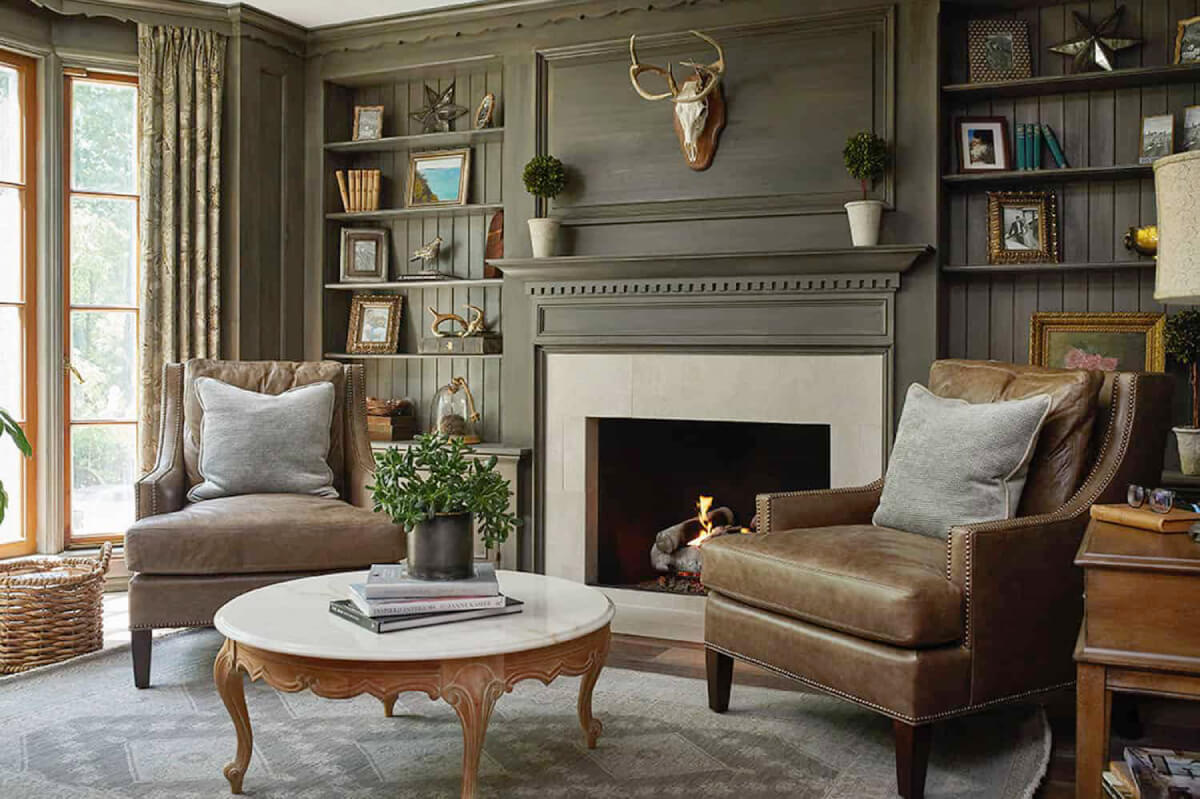
Source: onekindesign.com
Rich color palette
Traditional style often incorporates a warm and rich color palette. Deep colors such as burgundy, navy, gold, and earth tones are typically employed to create a pleasant and welcoming atmosphere.
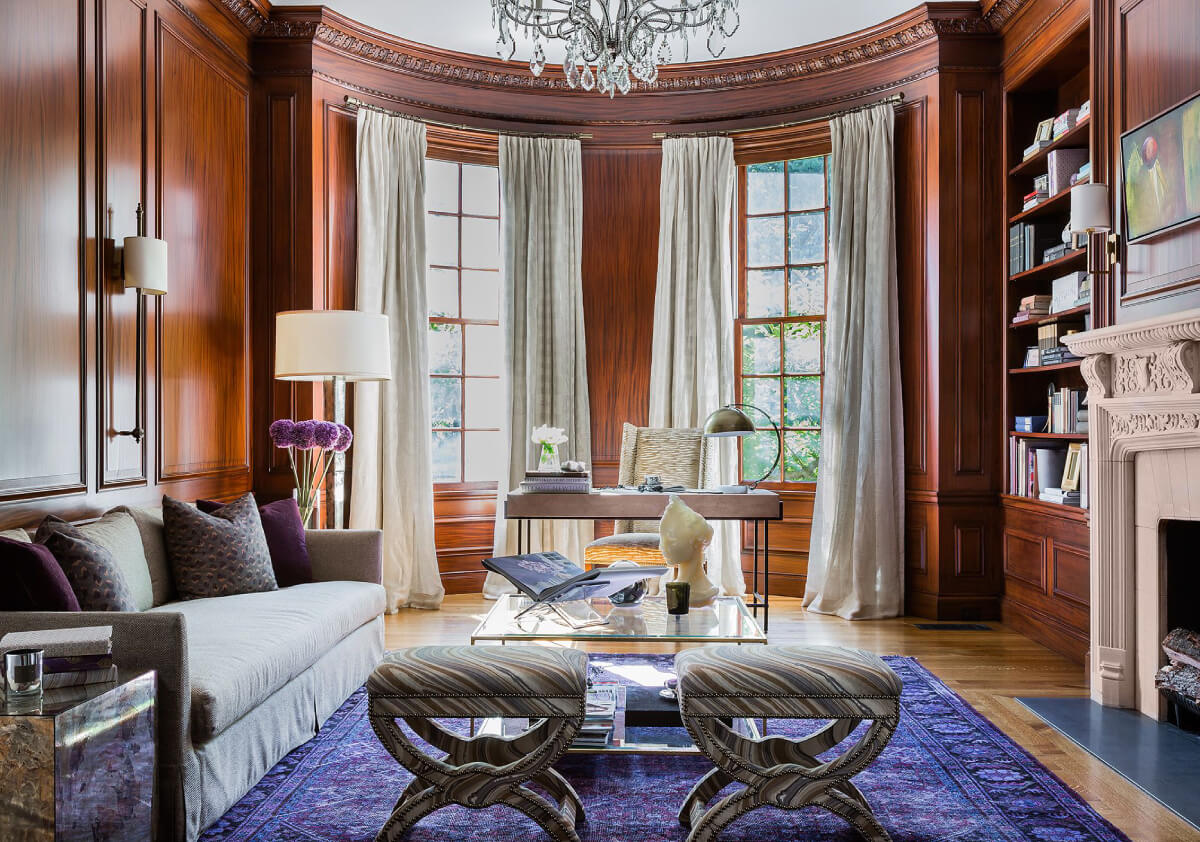
Source: hearstapps.com
Symmetry and balance
Traditional interiors aim for symmetrical arrangements and balance. Furniture, accessories, and architectural elements are often placed in pairs or groups to create a harmonious composition.
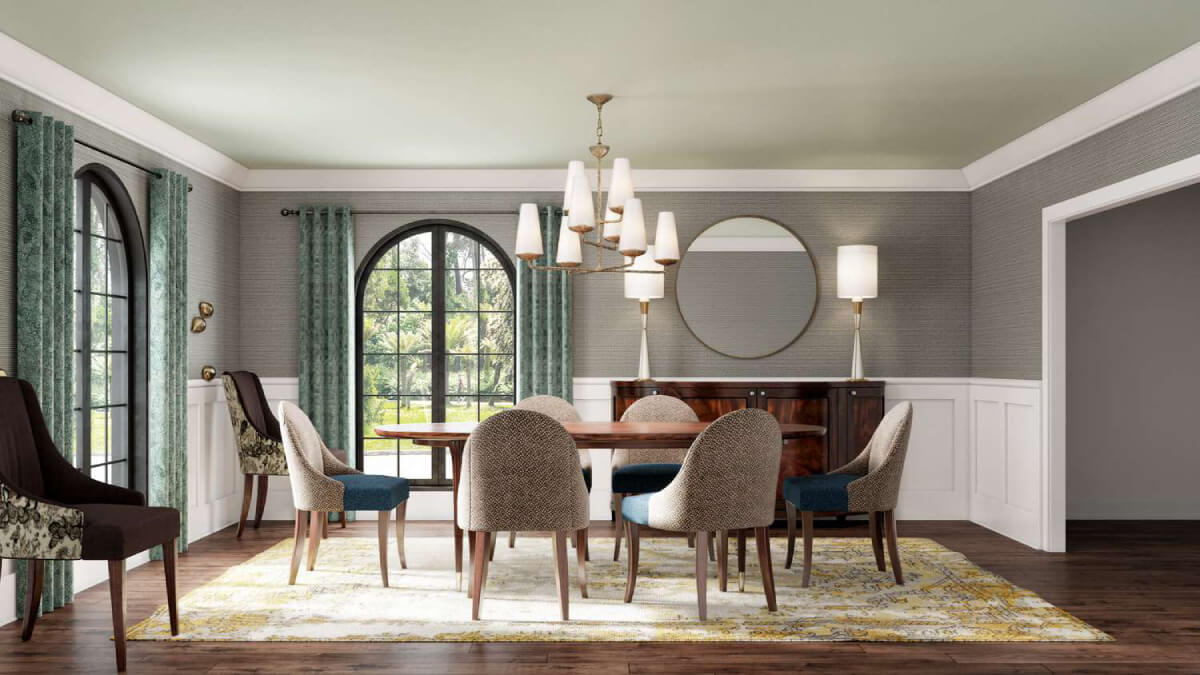
Source: www.thespruce.com
Classic furniture
Using furniture pieces with classic silhouettes and intricate craftsmanship is one of the main features of traditional style. Wingback chairs, roll-arm sofas, and claw-foot tables are common choices, often upholstered in luxurious fabrics like velvet or damask.
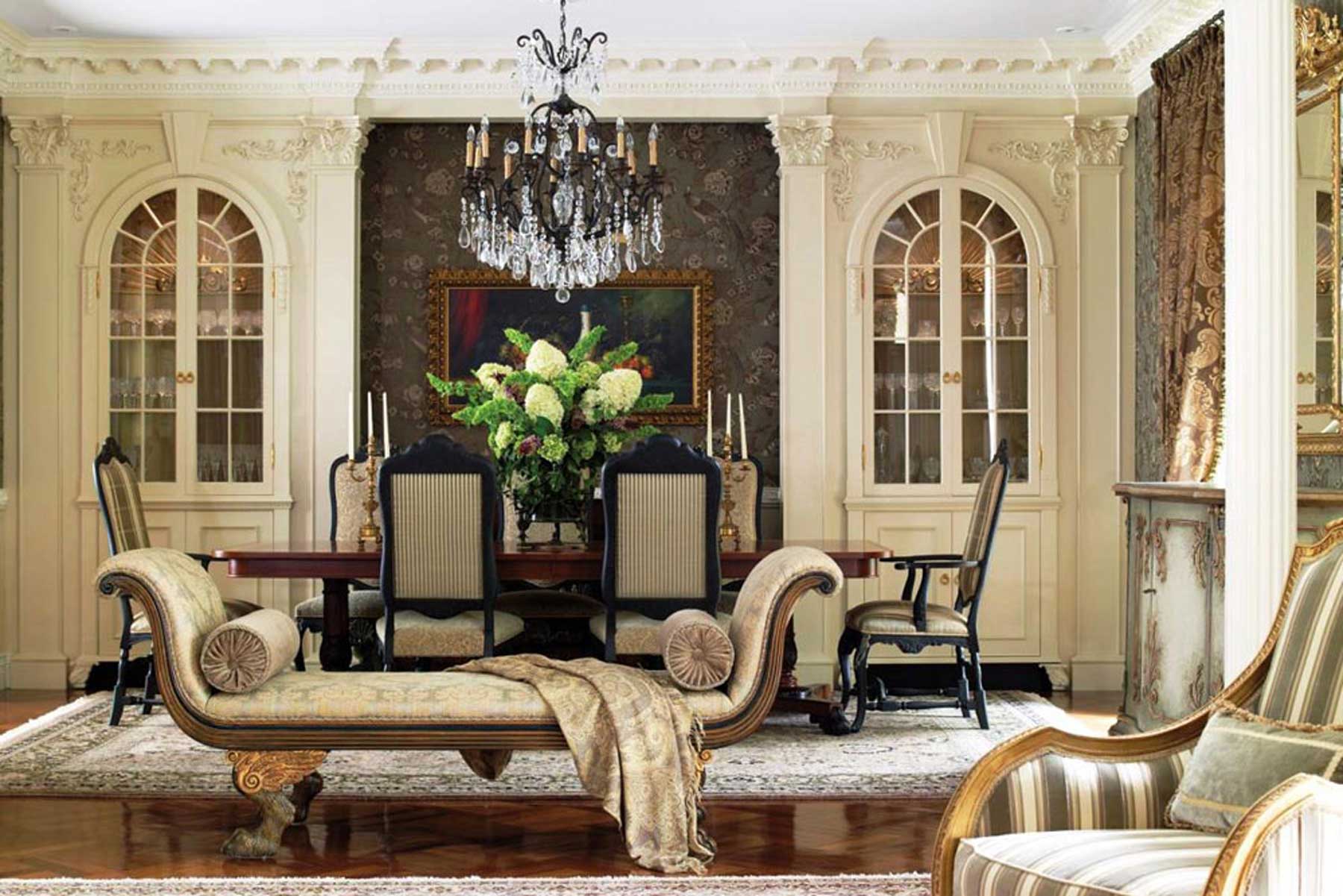
Source: designbx.com
Formality and elegance
Traditional interiors exude a sense of formality and refinement. Delicate fabrics, wood, and surfaces contribute to a sophisticated ambiance.
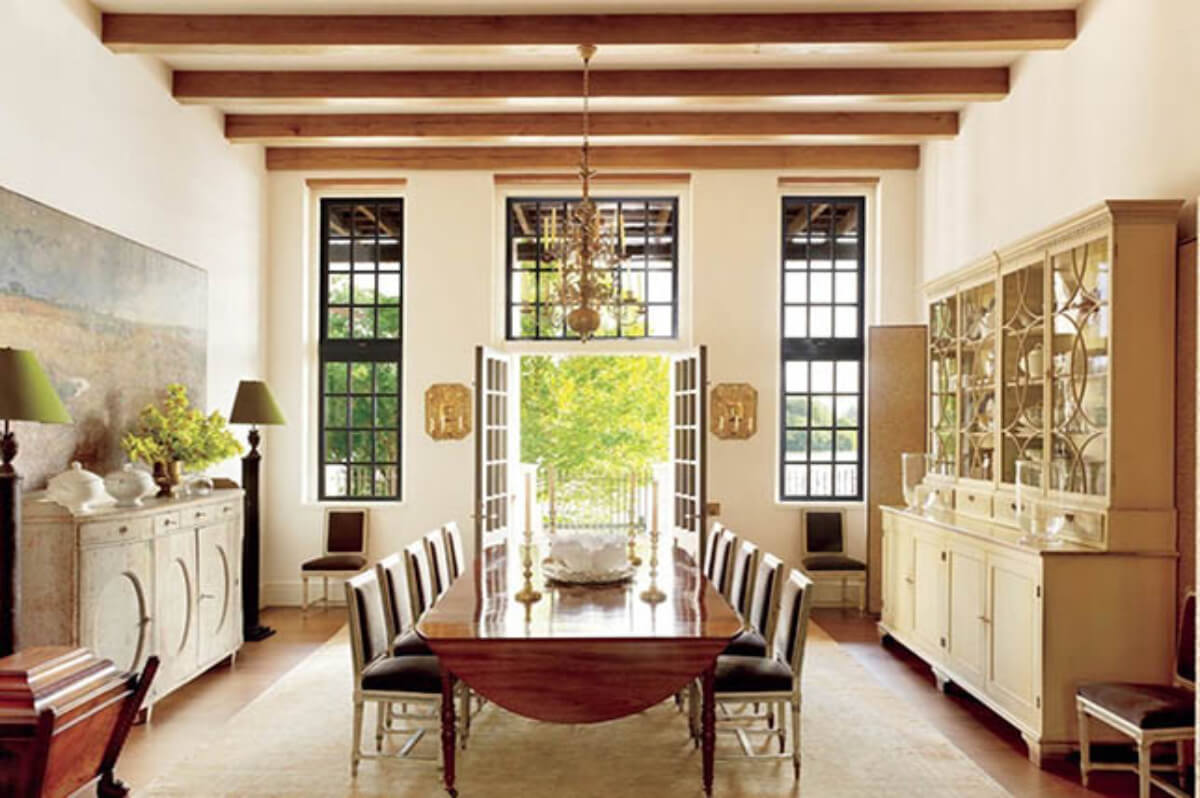
Source: decoraid.com
Traditional patterns and textures
The traditional style features florals, damasks, plaids, stripes, and textured materials like brocade, silk, and velvet for depth and interest.
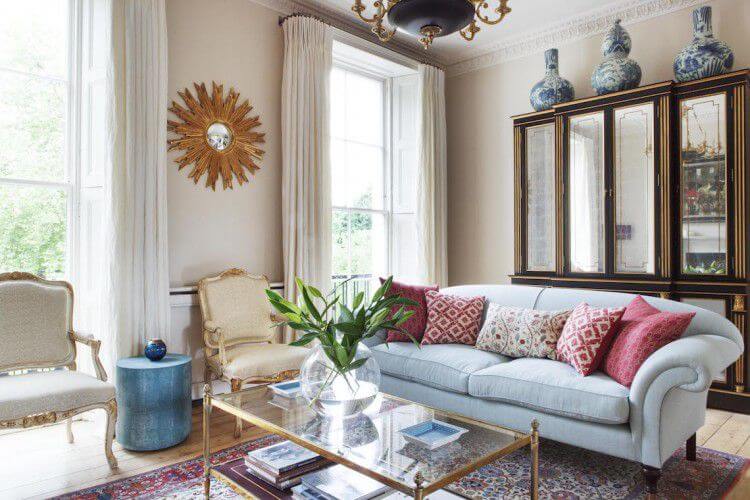
Source: thespruce.com
Layered and cozy spaces
The traditional interior design uses layered decor, including rugs, draperies, curtains, and decorative objects, to create a warm, inviting atmosphere.
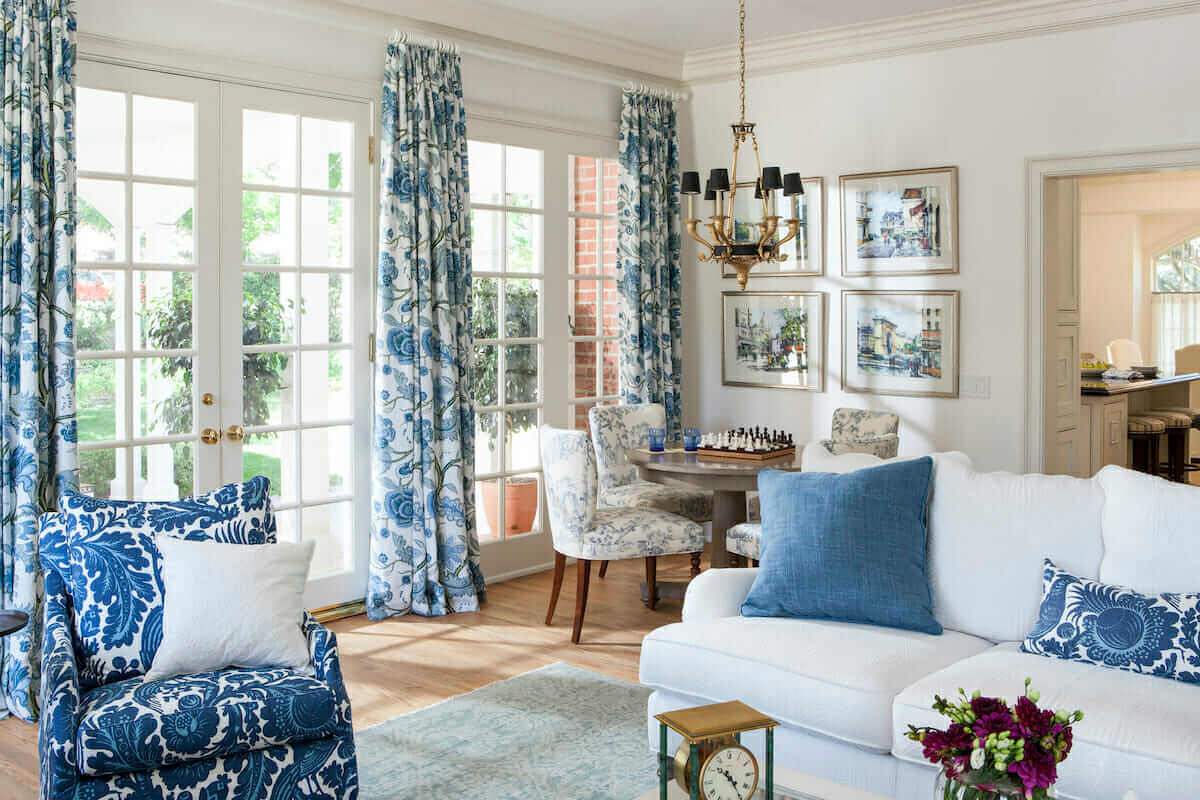
Source: decorilla.com
Antique and vintage pieces
Traditional interiors often feature antique or vintage furniture, art, and accessories. These elements add to the impression of history and timelessness that characterize classic design.
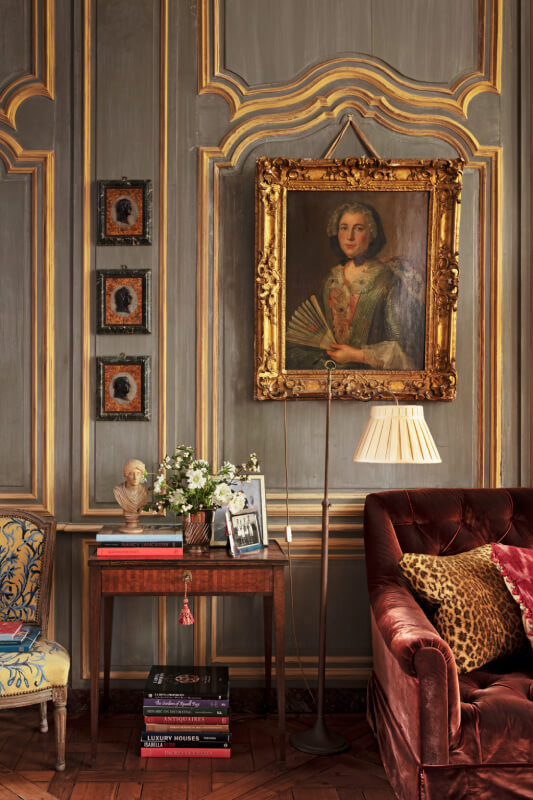
Source: hearstapps.com
Decorated doors
Traditional interiors consider doors as decorative features, often featuring intricate paneling, raised moldings, and carved details. Decorated door handles, hinges, and hardware enhance the ornamental appeal, improving the character and elegance of the space.
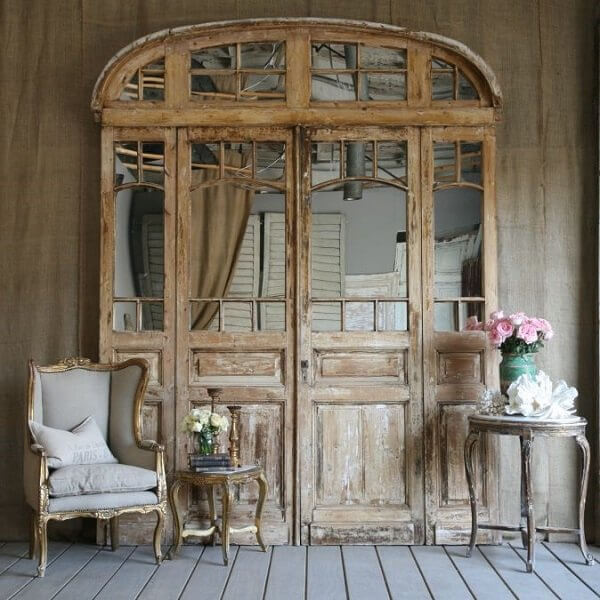
Source: deavita.net
Ornate fireplaces
Traditional-style interiors feature fireplaces as focal points, exuding warmth and creating a cozy atmosphere. Fireplaces are typically made from marble or wood with intricate carvings and decorative moldings. Overmantels, flanked by symmetrical shelves or sconces, display artwork, mirrors, or collectibles.
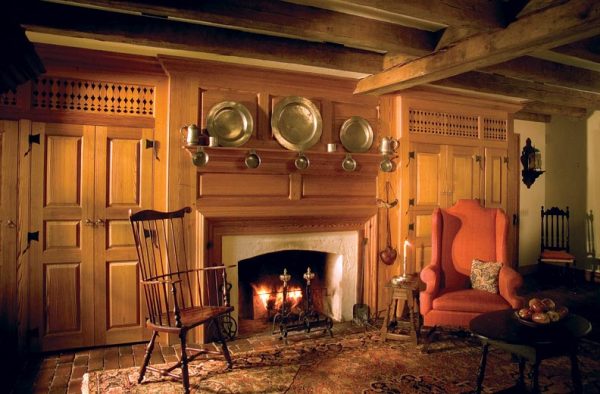
Source: oldhouseonline.com
Virtual Staging with Traditional Style
Virtual staging is a powerful tool that allows designers and real estate professionals to transform empty spaces into appealing and inviting environments. Traditional style in virtual staging is a new and exciting approach that allows for creating a virtually timeless and classic look.
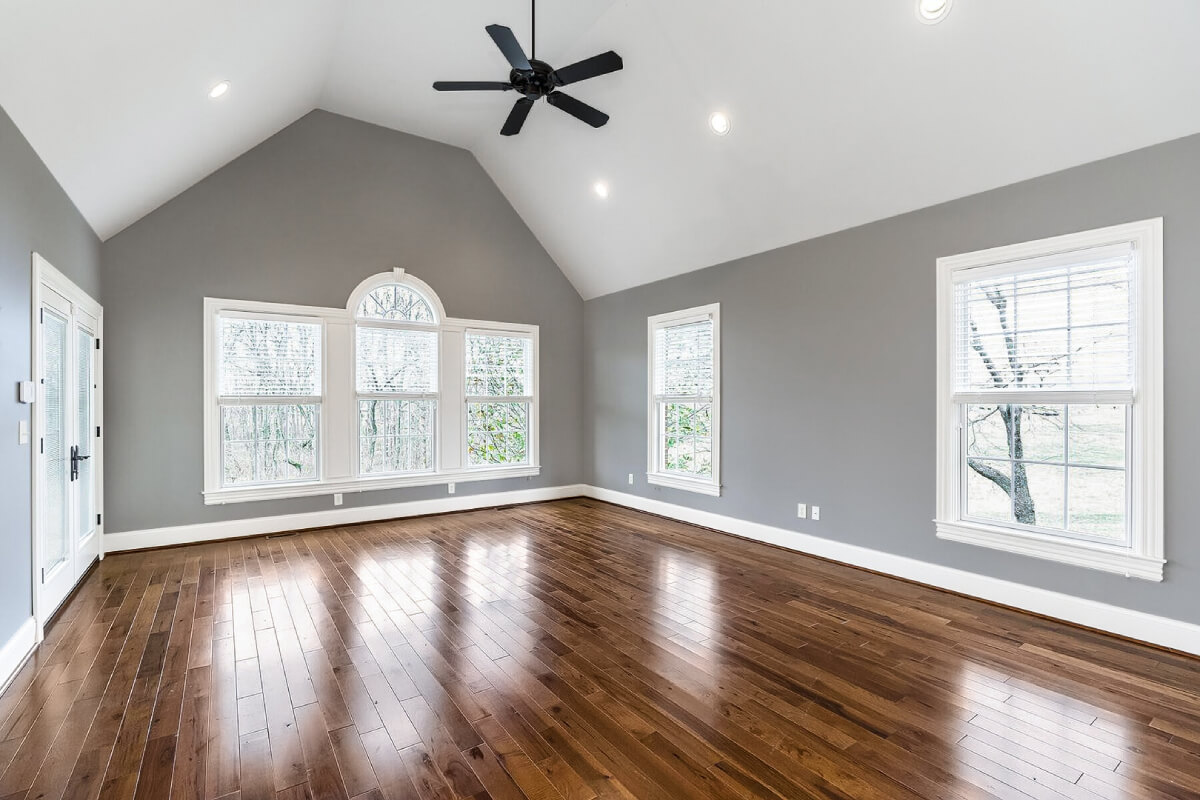
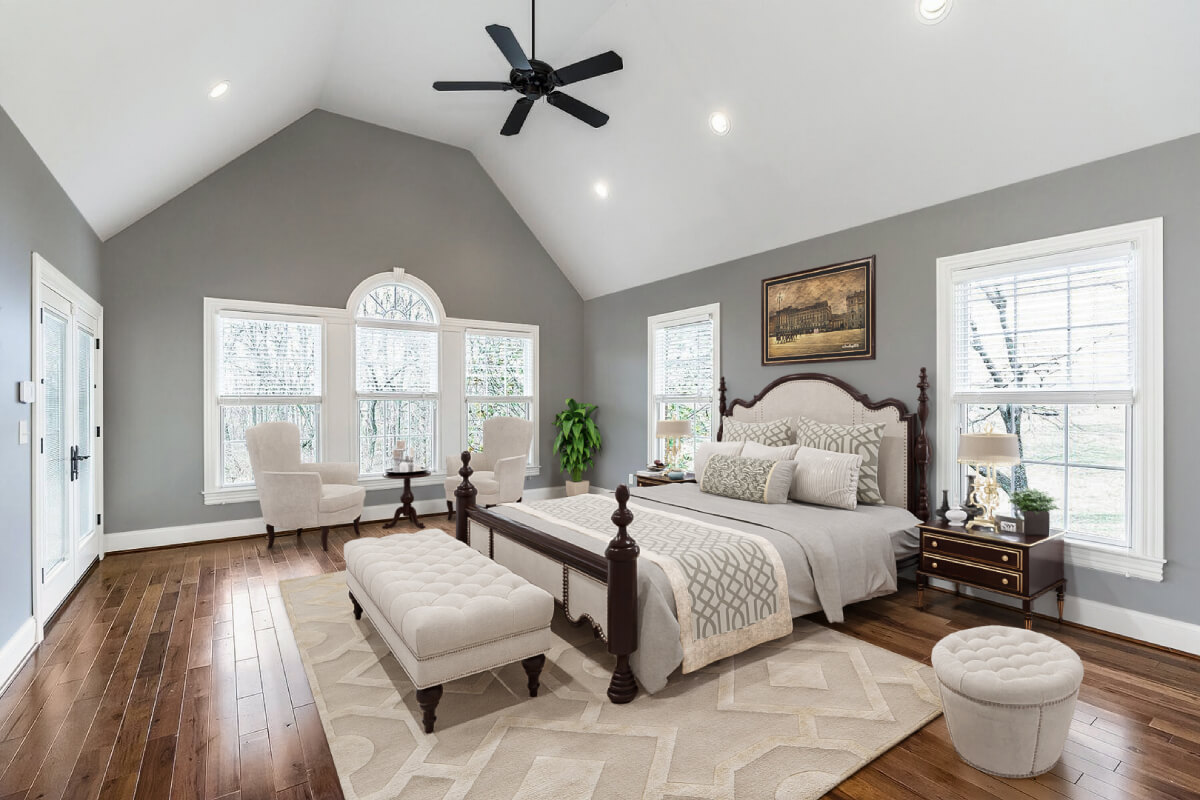
To order Virtual Staging at an unbeatable price click below!
In a traditional-style bedroom, the focus is on creating a warm and cozy atmosphere. You can choose a classic bedframe with intricate details, such as a sleigh or four-poster bed, and dark wood finishes for a luxurious experience. Choose a soft color palette for the walls, such as neutral hues, beige, gray, or cream, and add texture with amazing wallpaper or a subtle floral pattern. Decorate the bed with luxurious bedding, including layers of pillows, a duvet, and a bedcover in muted, earthy tones or traditional patterns like florals or stripes. To finish the design, add a lovely bedside table with an antique lamp and other decorative things like photo frames or a tiny vase of flowers.
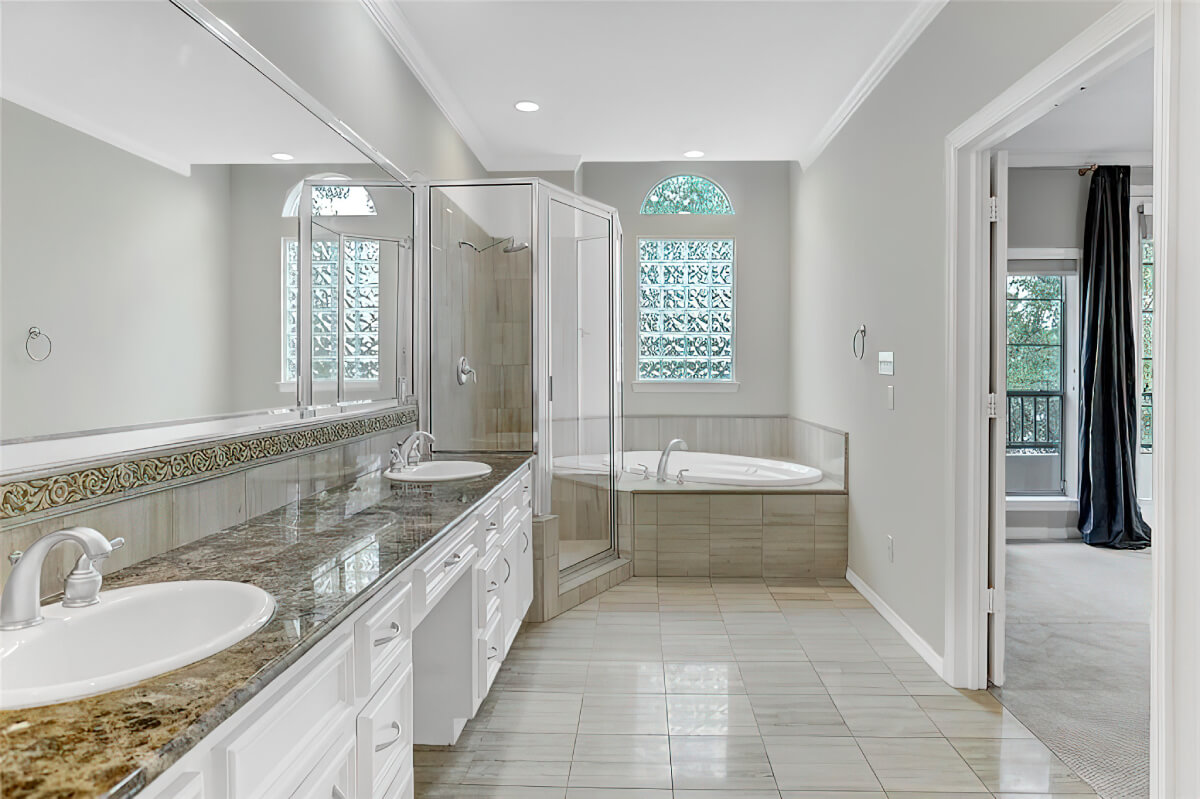
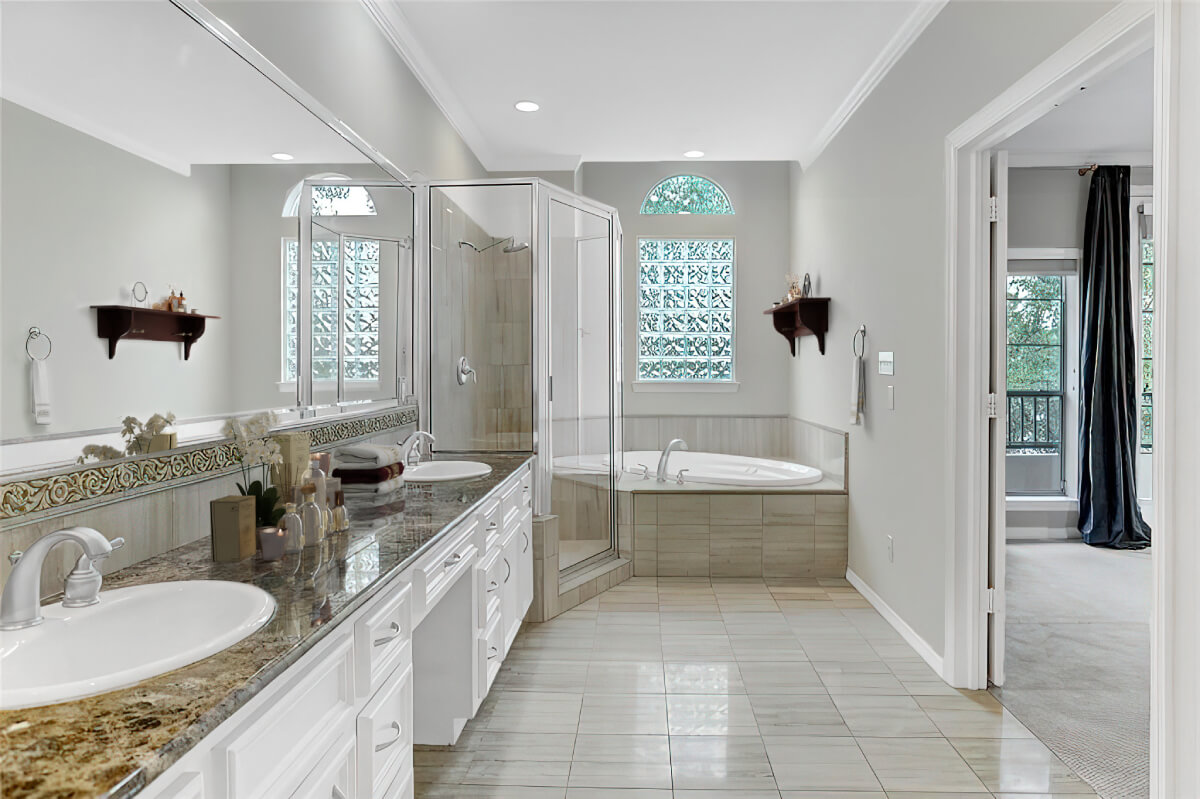
To order Virtual Staging at an unbeatable price click below!
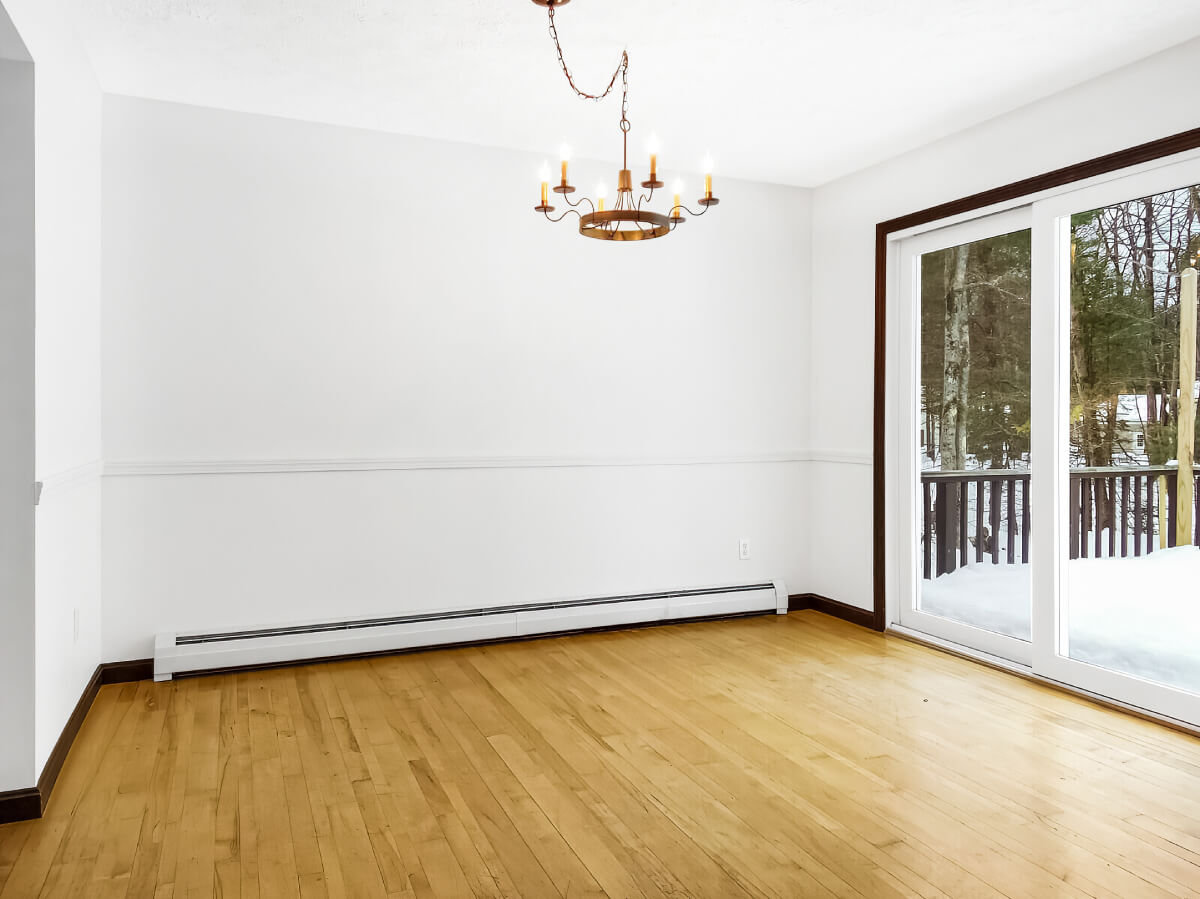
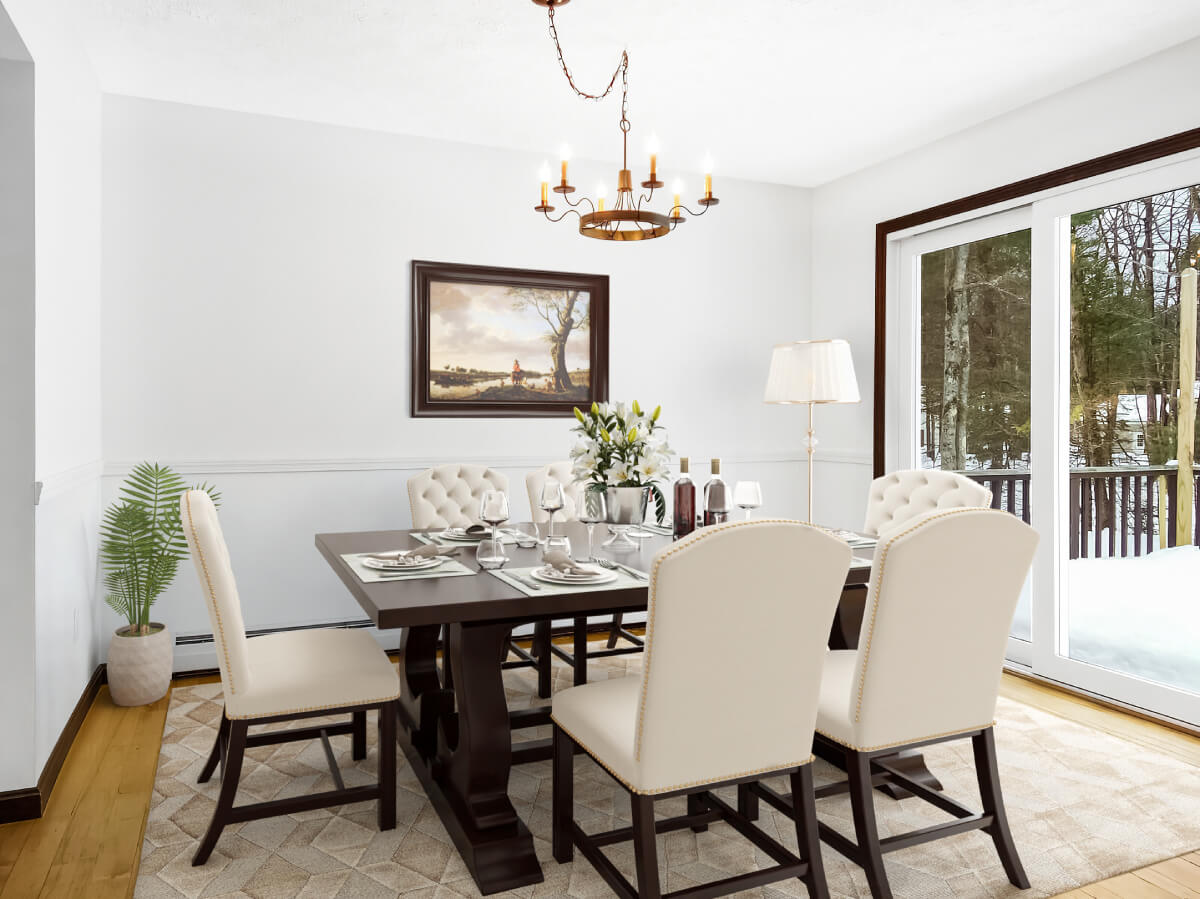
To order Virtual Staging at an unbeatable price click below!
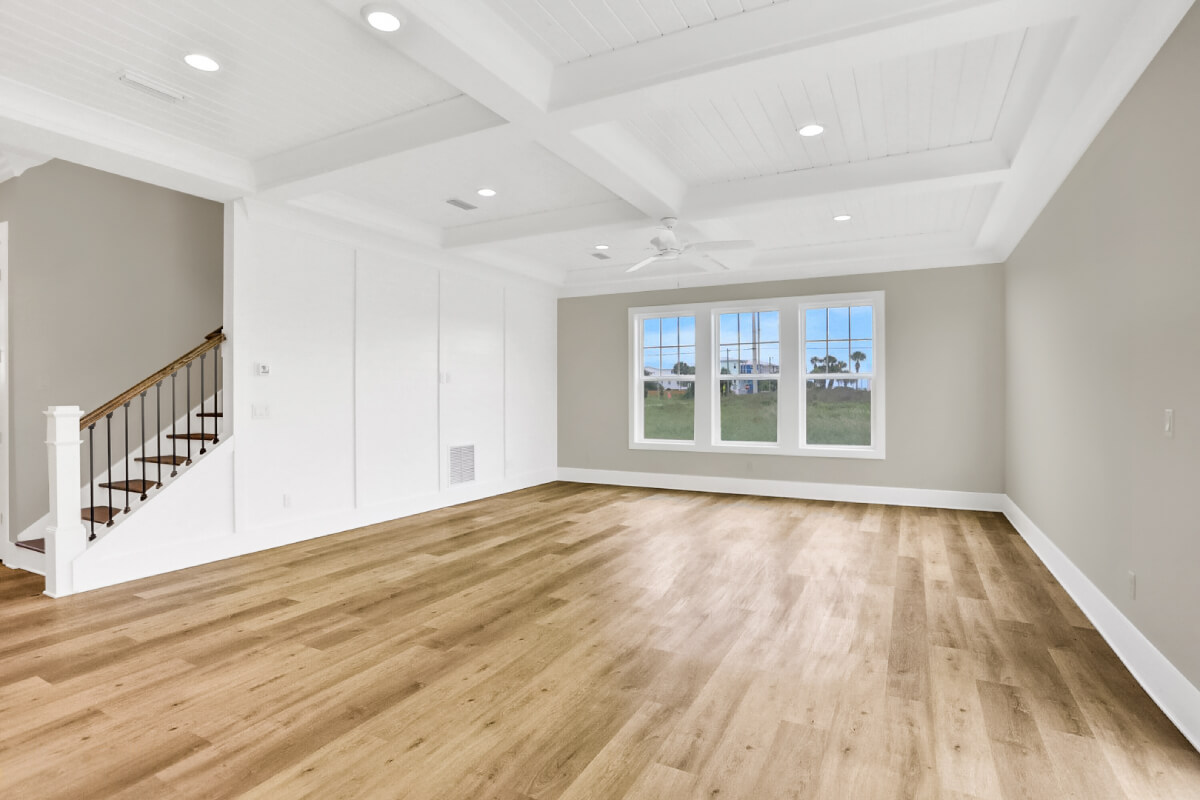

To order Virtual Staging at an unbeatable price click below!
Select a comfortable and stylish sofa and pair it with classic armchairs covered in luxurious materials such as velvet or brocade. Incorporate traditional wooden coffee tables or side tables with intricate detailing. Add warmth to the space with a fireplace or a classic cupboard. Use a neutral or warm color palette for the walls, and consider adding ornate moldings or wainscoting. Complete the look with traditional artwork, a decorative mirror, and a lampshade with a fabric covering.
When to Use the Traditional Style
Traditional interior design appeals to a wide variety of individuals who value its enduring elegance and refined aesthetic. Here are some groups of people who often enjoy traditional style:
Classic enthusiasts
Those with a strong appreciation for history and tradition are drawn to the appeal and sentimentality of traditional design. They value the timeless beauty of ornate detailing, antique furniture, and the craftsmanship associated with this style.
Comfort seekers
Traditional interiors offer a cozy, inviting atmosphere, attracting individuals seeking comfort and warmth through plush upholstery, layered textures, and familiar elements.
Mature audiences
Older generations, who grew up with the elegance of traditional design, frequently favor traditional style. It evokes a sense of nostalgia and familiarity, reminding them of memories and creating a sense of comfort and belonging.
Sophistication seeker
Individuals who like a more formal and luxurious look are attracted to classic interiors’ beauty, intricate features, and perfect workmanship.
Homeowners of historic properties
People who live in historic properties often embrace traditional design to preserve and enhance their homes’ original character and architectural features.
Final Word
The traditional style is a design approach that embraces classic and timeless elements characterized by ornate detailing, elegant furnishings, and a warm color palette. It exudes a sense of refinement, sophistication, and familiarity. Traditional style in virtual staging combines the timeless beauty of classical design with the digital environment, creating fascinating and individualized experiences. It highlights the refined charm, rich detailing, and classic aesthetics of classical style using advanced 3D rendering methods. Virtual staging brings classic style to life by blending with various design trends and creating realistic visuals, inspiring and delighting visitors.
FAQ
Traditional-style virtual staging can benefit real estate marketing by helping potential buyers or renters envision a space as warm, welcoming, and timeless. It can create an emotional connection and showcase the property’s potential, making it more appealing and memorable.
Traditional style brings a sense of warmth, comfort, and familiarity, which can make a small home feel inviting and intimate. Use appropriate furniture scaling, light color palettes, creative storage solutions, and attention to detail to enhance the aesthetics of a small home.


